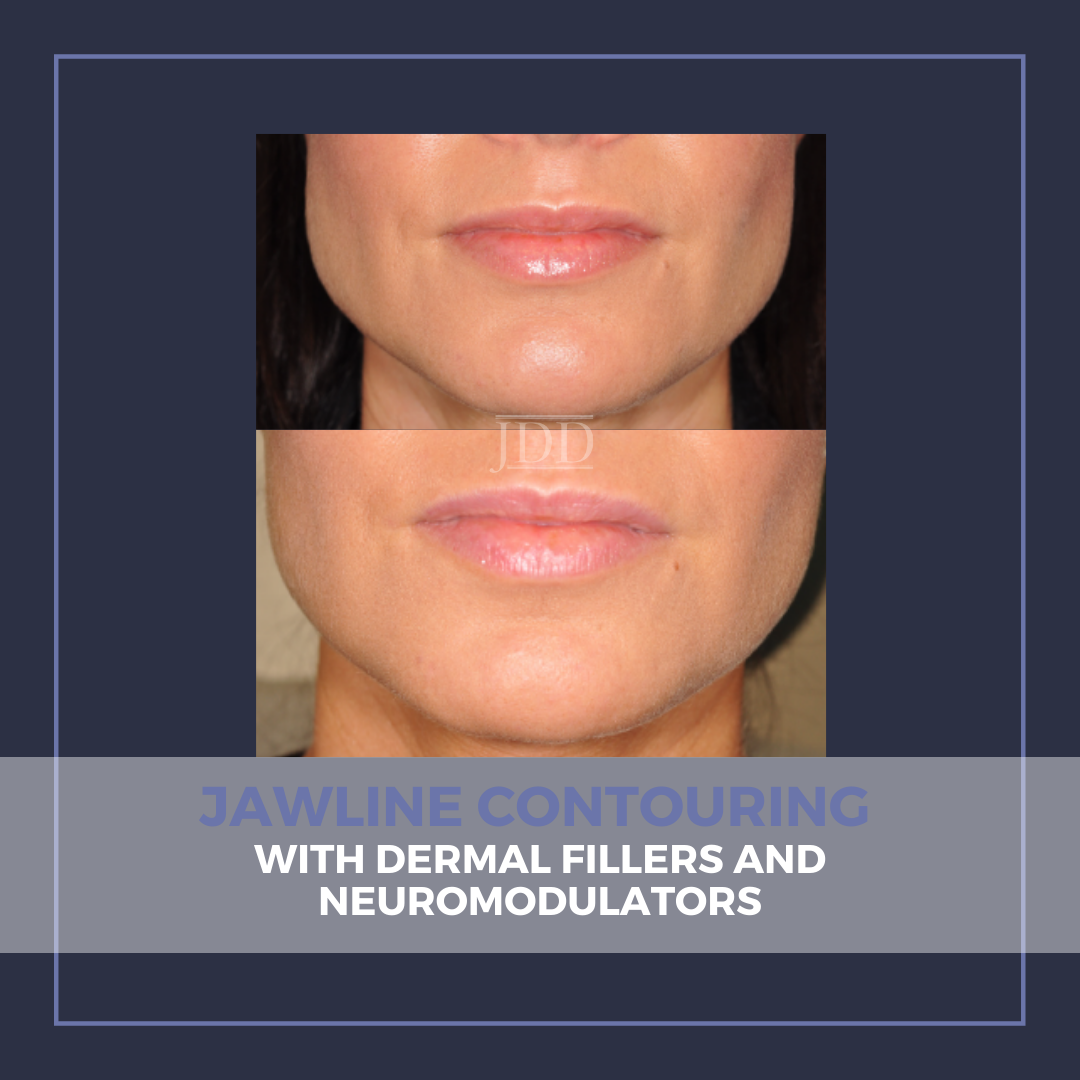When we discuss contouring, the aesthetic goal is to define the shape of the desired area; this includes creating lights and shadows. With injectables, we can change the shape of the lower face to restore a youthful, attractive facial contour.
Injectables can be used to add or subtract volume. When we add volume, we create a light reflex. When we remove volume, we create a shadow.
Age-related changes to the lower face include changes in volume and structural support:
-
- Loss of mandibular height
- Loss of mandibular length
- Development of an obtuse mandibular angle
- Chin retrusion
- Exaggerated pre-jowl sulcus
- Increase in submandibular adipose
Mandibular width
Neuromodulators can be used to treat aesthetic and functional changes of the lower face. For aesthetic purposes in women, decreased mandibular width can be achieved with neuromodulators in the masseter muscle. This can also be used for functional treatment of bruxism in men or women. Masseter muscle hypertrophy results in a square jawline, mandibular bone resorption, gum recession, and accelerated aging process of the lower face.1 Many patients may not realize that clenching and grinding of their teeth result in these effects. Atrophy of the masseter muscle will reshape the lower face over time and improve quality of life measures such as pain from clenching and grinding. This will ultimately prevent dental changes and progressive bone resorption of the lower face. 1
Dermal fillers can be used to add width by injecting deep at the mandibular angle. Soft tissue fillers with a high G prime should be used. These fillers have increased resistance to movement and decreased spread after placement resulting in increased volume support after injection.
Chin Augmentation
Dermal fillers can be injected into the mentum inferiorly to elongate the face or anteriorly to aid in chin projection.
The mental and submental arteries arise from the mental foramen. Sometimes the mental foramen is palpable, but to reduce risk of vascular occlusion, consider using cannula when injecting in/around the mentum.
In men, the median point on the anterior surface of the chin should project approximately as far as the lower lip. The chin width should span the oral commissures. Whereas in women, the lower lip should project 1-2 mm beyond the chin and the chin should span the medial canthi. A tapered supraperiosteal injection pattern will result in a more feminine aesthetic.
Neuromodulators can also be used to enhance the appearance of the chin. Neuromodulator injection into the mentalis muscle will not only decrease the orange peel appearance of the chin, but also relaxes the mentalis muscle allowing for inferior displacement of the chin. The projection of the chin is enhanced and the chin no longer has a contracted appearance.
In terms of injectables, deoxycholic acid can be used to reduce submental fat to define the chin in male and female patients. There is a risk of alopecia in male patients. The etiology is unclear, but submental patchy alopecia is usually not aesthetically evident.
Mandibular Ramus
To add length to the mandible, dermal fillers can be injected supraperiosteal along the angle of the mandible, with a focus on the pre-jowl and post-jowl sulcus. Dermal fillers can be was injected into the pre-jowl sulcus to define the mandibular ramus. A cannula technique with subdermal injections is another method to define the mandibular ramus. Deoxycholic acid can be injected into the jowl to reduce the volume and expose the mandibular ramus. However, this is off-label and care must be taken to regional anatomy, especially the Marginal Mandibular nerve which resides in that area.
When using injectables to contour, combination therapy with energy-devices may result in optimal outcomes. Dermal fillers can reinforce the structural support and enhance the contour of the chin and jawline. Chin augmentation and jawline contouring using injectables can be performed effectively and safely with adequate background knowledge of the regional anatomy and appropriate patient selection.
References:
-
- Almukhtar, Rawaa M. M.D., M.P.H.; Fabi, Sabrina G. M.D. The Masseter Muscle and Its Role in Facial Contouring, Aging, and Quality of Life: A Literature Review, Plastic and Reconstructive Surgery: January 2019 – Volume 143 – Issue 1 – p 39e-48e doi: 10.1097/PRS.0000000000005083
This information was presented by Dr. Terrence Keaney at the ODAC Conference held January 14-17, 2021. The above highlights from his lecture were written and compiled by Mojgan Hosseinipour, DO, FAAD.
Did you enjoy this article? Find more on Aesthetic Dermatology topics here.

